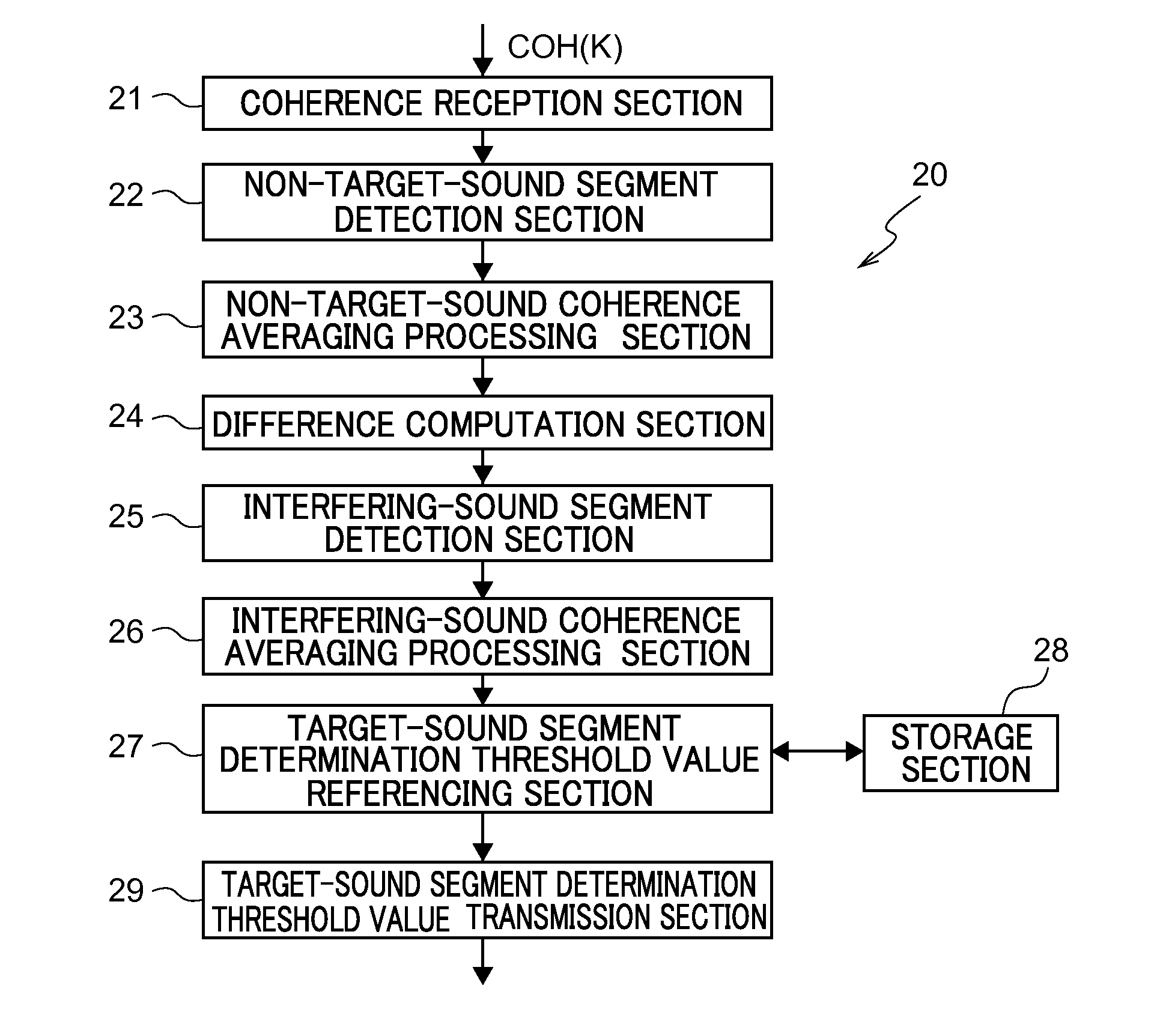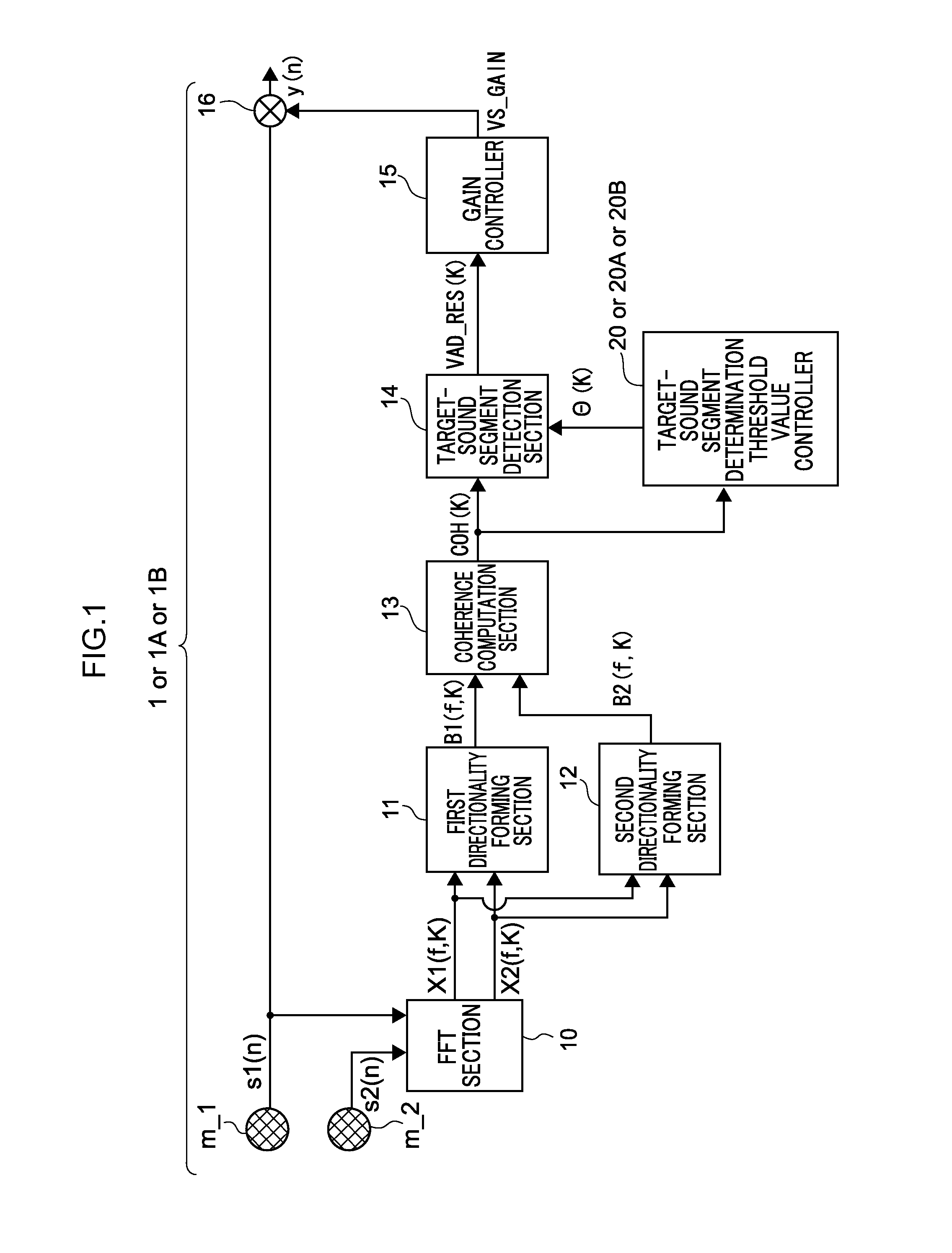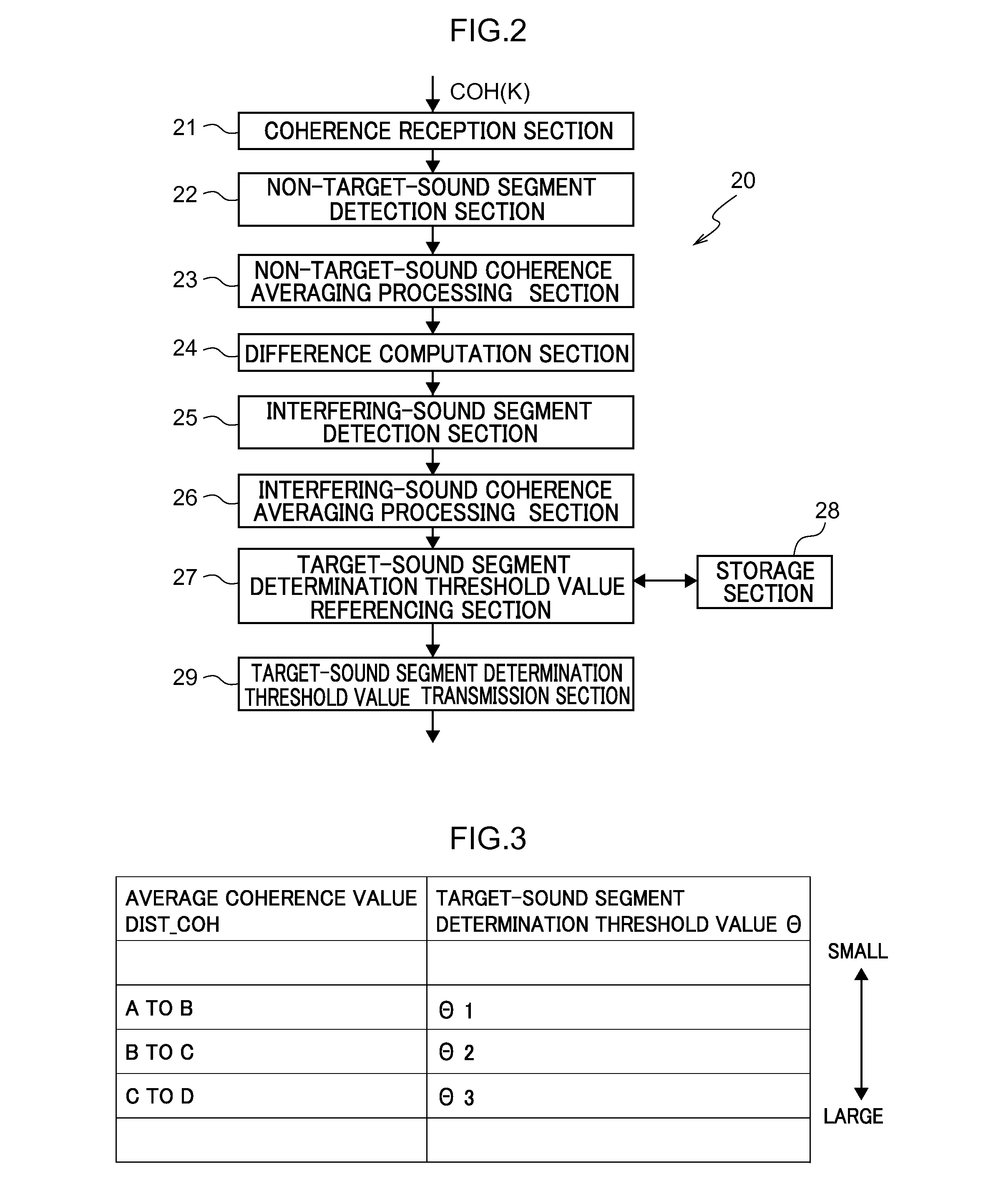Audio signal processor, method, and program
a signal processor and audio technology, applied in the direction of frequency/directions obtaining arrangements, speech analysis, instruments, etc., can solve the problems of insufficient speech sound quality, inability to suppress interfering sound by such voice switches, and inability to achieve sufficient speech sound quality, etc., to achieve the effect of improving sound quality
- Summary
- Abstract
- Description
- Claims
- Application Information
AI Technical Summary
Benefits of technology
Problems solved by technology
Method used
Image
Examples
first exemplary embodiment
A. First Exemplary Embodiment
[0053]Explanation follows regarding an audio signal processing device, method, and program of a first exemplary embodiment of the invention, with reference to the drawings. The first exemplary embodiment is able to appropriately set a determination threshold value Θ for a target-sound segment according to an arrival direction of an interfering-sound, based on the coherence COH.
A-1. Configuration of the First Exemplary Embodiment
[0054]FIG. 1 is a block diagram illustrating a configuration of an audio signal processing device according to the first exemplary embodiment. Corresponding sections similar to those in FIG. 13 are illustrated appended with the same reference numeral. Except for the pair of microphones m_1 and m_2, the audio signal processing device may be implemented by software executed by a CPU (an audio signal processing program); in terms of function however, the audio signal processing device can be represented by FIG. 1.
[0055]In FIG. 1, an ...
second exemplary embodiment
B. Second Exemplary Embodiment
[0082]Explanation next follows regarding an audio signal processing device, a method, and a program of a second exemplary embodiment according to the present invention, with reference to the drawings.
[0083]In rare cases, the interfering-sound segment detection method of the first exemplary embodiment sometimes makes an interfering-sound segment detection despite the segment not being an interfering-sound segment, and the second exemplary embodiment is configured to help prevent such erroneous detection. In the first exemplary embodiment, the detection method for the interfering-sound segment, for example a background noise segment immediately following transition from a target-sound segment to a non-target-sound segment, sometimes makes an interfering-sound segment detection despite the segment not being an interfering-sound segment. Errors also arise in the setting of the target-sound segment determination threshold value Θ (K) if the average value DIS...
third exemplary embodiment
C. Third Exemplary Embodiment
[0092]Explanation next follows regarding an audio signal processing device, a method, and a program of a third exemplary embodiment according to the present invention, with reference to the drawings.
[0093]The coherence COH in non-target-sound segments suddenly increases immediately after switching from a background noise segment to an interfering-sound segment. However, since the average coherence value DIST_COH (K) of the interfering-sound segment is an average value, variation does not immediately appear in the average coherence value DIST_COH (K) even when the coherence COH suddenly increases. Namely, the coherence average value DIST_COH (K) tracks sudden increases in the coherence COH poorly. As a result, the average coherence value DIST_COH (K) of the interfering-sound segments is not accurate immediately after switching from a background noise segment to an interfering-sound segment. The third exemplary embodiment takes such points into considerati...
PUM
 Login to View More
Login to View More Abstract
Description
Claims
Application Information
 Login to View More
Login to View More - R&D
- Intellectual Property
- Life Sciences
- Materials
- Tech Scout
- Unparalleled Data Quality
- Higher Quality Content
- 60% Fewer Hallucinations
Browse by: Latest US Patents, China's latest patents, Technical Efficacy Thesaurus, Application Domain, Technology Topic, Popular Technical Reports.
© 2025 PatSnap. All rights reserved.Legal|Privacy policy|Modern Slavery Act Transparency Statement|Sitemap|About US| Contact US: help@patsnap.com



